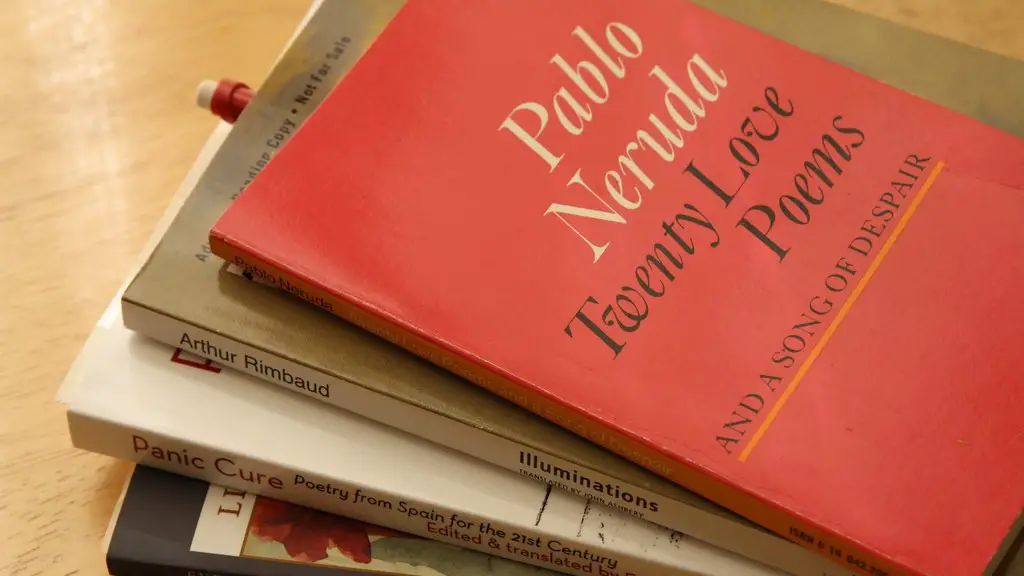Analysis of Harlem by Langston Hughes
Langston Hughes is a leading African-American poet and novelist, who from the 1920s to the early 1960s was a key figure in the Harlem Renaissance. His poem “Harlem” speaks to the realities of poverty in African-American communities during the era, and of the brutal frustration of hope deferred. The poem itself is rather short and simple in structure, with only two simple rhyming couplets and a two-line chorus.
The poem’s structure underscores its meaning. It is broken into two halves – the first devoted to the dream, and the second to the resulting disappointment of a delayed dream. The poem’s tone is generally sorrowful. Hughes writes in a very plain, simple language, and yet the meaning still conveys tremendous frustration and despair. “What happens to a dream deferred?/ Does it dry up / like a raisin in the sun?” This misery is further propelled by the poem’s refrain, insisting that the dream lost its way “like a sore — and then run” – emphasizing the irony of how quickly a hope can become a hurt.
The tone of the poem also appears in its diction. The poem is full of metaphors – such as “a raisin in the sun” and “a heavy load” – to emphasize the physical weight of disappointment. This imagery is significant, because it creates a physical weight of oppression and despair, further amplifying the poem’s overall tone and viscerally conveying the message of oppression without needing to state it explicitly.
Likewise, the poem’s terse and choppy syntax underscores the hopelessness of the situation and the poem’s message about racial inequality. Hughes is concise and direct in his delivery, and these punctuated segments of questions and refrains reinforces the feeling of moving from one disappointment to the next. The poem thus uses a judicious economy of language and structure to paint the picture of a people stuck in a cycle of dashed hopes and disappointment – all of which contribute to creating the poem’s sorrowful tone.
Literary Analysis of Harlem
Harlem, by Langston Hughes, is a poem written in free verse to express his views of racial issues in a straightforward, yet poetic manner. His use of imagery and simple words evokes an emotional response, such as hope in the first stanza, sadness in the second, and resignation in the third. Hughes also employs a rhetorical question format throughout, to emphasize the point that there is no concrete answer to the problem of deferred dreams.
The poem’s tone was introduced early on when Hughes asks “what happens to a dream deferred” This type of question evokes a sense of worry and sadness, and Hughes continues to connect with this feeling through the poem’s imagery. He describes the deferred dream turning into “a heavy load” or “explod[ing]”, setting the stage for the fourth and fifth stanzas. This imagery conveys a deep-seated feeling of loss and regret that cannot be resolved in the poem.
Hughes’ answer to his own rhetorical questions occurs in the last two lines of the poem. He writes “Or does it explode” which is a powerful conclusion to the poem, as it implies that these dreams will eventually become too much to bear, and only by action can they be resolved realistically. This implies a sense of helplessness, as a resolution will always remain out of reach, no matter how hard one works.
Historical Context of Harlem
During the 1920s to the early 1960s, Langston Hughes was a prominent figure in the Harlem Renaissance. It was during this time that he wrote his poem “Harlem”, which speaks to the realities of poverty in African-American communities during the era and of the constant frustration of hope deferred. In the poem, Hughes conveys the feelings of disappointment and helplessness that many African-Americans felt as they lived in a country that promised them so much but gave them so little.
The poem also touches on the need for action to resolve the long-standing problem of racial inequality in the United States. He suggests that taking action against this issue is a more viable solution than hope; this call to action speaks to the civil rights movement and changing public opinion in the US at the time. This was a period of great change, and Hughes’ poem speaks directly to the struggles of those attempting to make a difference.
Conclusion of Harlem
Harlem by Langston Hughes is a powerful poem that speaks to the disappointment and frustration of hope deferred. The poem’s plain language, carefully chosen imagery, and terse and choppy syntax underscore the hopelessness of the situation and the importance of the message Hughes was attempting to convey. The poem was written during a time when many African-Americans were struggling to find their way in a country that had promised them so much yet failed to deliver. Through his poem, Hughes speaks to the realities of poverty and racism in the US and suggests a call to action as the only solution.
Themes of Harlem
The thematic focus of Langston Hughes’ poem “Harlem” is the struggle of African-Americans to reach the American Dream, and the feelings of frustration and disappointment when their dreams are deferred. Hughes paints a vivid picture of the realities of poverty in African-American communities during the era, and the crushing weight of oppression and despair that accompanies it. Through his poem, Hughes suggests that hope, on its own, may not be enough: the only real solutions are positive action and perseverance.
The poem’s themes are further reflected in its structure. The poem is broken into two halves – the first devoted to the dream, and the second to the resulting disappointment of a deferred dream. This structure is a powerful reminder that dreams, regardless of their strength or intensity, will only remain dreams until they are acted upon. This is a key theme of Hughes’ poem, and one that resonates through the centuries, including in today’s world.
Symbolism in Harlem
Hughes’ poem Harlem is rife with symbolism. Hughes’ most prominent symbol is “a dream deferred”, which represents the dream of achieving a better, more equitable life for African-Americans. The poem’s other symbols – like the stick of dynamite, the raisin in the sun, and the “heavy load” – can be interpreted as metaphors for the need for action in order to see that dream become reality.
These symbols are further underscored by the poem’s choppy syntax, which serves to emphasize the feeling of moving from hopelessness to hopelessness — a symbol for the cycle of dashed hopes and disappointment in which many African-Americans found themselves during the era. These symbols are used to great effect in the poem, conveying its themes without needing to state it explicitly.
Importance of Harlem
Harlem by Langston Hughes is an important poem because it speaks to the realities of racism and poverty in the US, and serves as a reminder that hope deferred is not hope abandoned. It is a powerful example of how literature can be used to explore important social issues, and how symbolism and rhetorical question format can be used to emphasize a point.
The poem’s themes are still relevant in today’s world, and its powerful message of action, perseverance, and hope still resonates with readers of all backgrounds. Hughes’ poem serves to remind us that dreams are but the start of something bigger, and only through tangible action will its true potential be realized.




